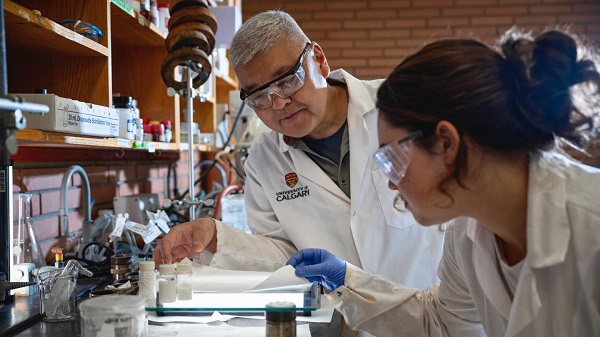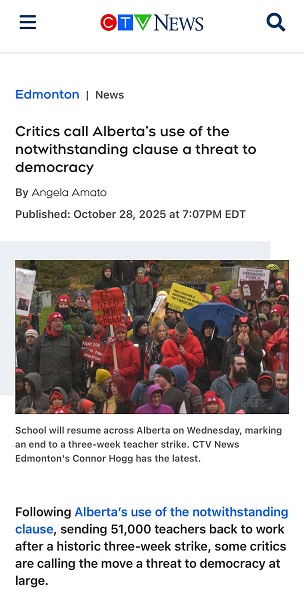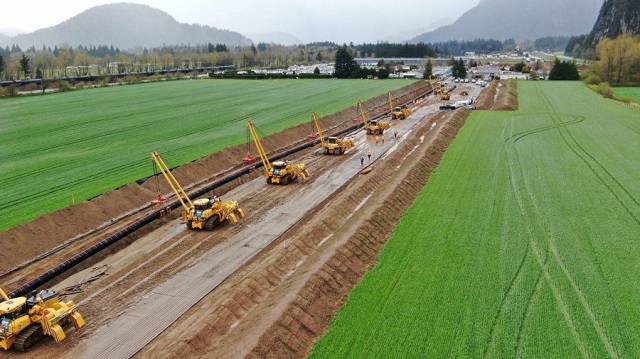Alberta
New direction in approach to COVID-19 testing in Alberta

From the Province of Alberta
Change in COVID-19 testing
Travellers returning to Alberta no longer automatically tested for COVID-19
A new approach to testing for COVID-19 that will prioritize groups at highest risk of local exposure and at-risk populations is being implemented in Alberta.
Travellers who returned to Alberta after March 12 and have mild symptoms will no longer be tested for COVID-19. Instead, the same advice applied to all Albertans will apply to them – to self-isolate at home and away from others. This change is effective going forward, so anyone who has already been told by Health Link that they will be tested will still get tested.
“Changing our testing protocols will allow us to focus Alberta’s testing capacity on those most at risk. This is consistent with the approach happening across Canada. It will enable us to strategically use our testing resources. Our new approach reflects the fact that the most important thing anyone can do if they have mild symptoms isn’t to get tested – it’s to stay home and self-isolate.”
Dr. Deena Hinshaw, Chief Medical Officer of Health
Testing will be prioritized for the following individuals, if they are symptomatic:
- People who are hospitalized with respiratory illness.
- Residents of continuing care and other similar facilities.
- People who returned from travelling abroad between March 8 and March 12 (before the self-isolation protocols were in place.
- Health-care workers with respiratory symptoms (this testing will begin later this week).
Anyone with symptoms who does not fit any of these categories should stay home and self-isolate for a minimum of 10 days from the start of their symptoms, or until symptoms resolve, whichever is longer.
The online self-assessment tool has been updated to reflect the change in testing for returning travellers.
Alberta Health Services is building extra capacity to be able to provide advice to returning travellers with symptoms, ensuring they are following proper medical directions including staying home and away from others, and monitoring their symptoms. These resources are expected to be in place later this week.
Alberta
From Underdog to Top Broodmare

WATCH From Underdog to Top Broodmare (video)
Executive Producers Jeff Robillard (Horse Racing Alberta) and Mike Little (Shinelight Entertainment)
What began as an underdog story became a legacy of excellence. Crackers Hot Shot didn’t just race — she paved the way for future generations, and in doing so became one of the most influential producers the province has known.
The extraordinary journey of Crackers Hot Shot — once overlooked, now revered — stands as one of Alberta’s finest success stories in harness racing and breeding.
Born in humble circumstances and initially considered rough around the edges, Crackers Hot Shot overcame long odds to carve out a career that would forever impact the province’s racing industry. From a “wild, unhandled filly” to Alberta’s “Horse of the Year” in 2013, to producing foals who carry her spirit and fortitude into future generations.
Her influence ripples through Alberta’s racing and breeding landscape: from how young stock are prepared, to the aspirations of local breeders who now look to “the mare that did it” as proof that world-class talent can emerge from Alberta’s paddocks.
“Crackers Hot Shot, she had a tough start. She wasn’t much to look at when we first got her” — Rod Starkewski
“Crackers Hot Shot was left on her own – Carl Archibald heard us talking, he said ‘I’ll go get her – I live by there’. I think it took him 3 days to dig her out of the snow. She was completely wild – then we just started working on her. She really needed some humans to work with her – and get to know that people are not scary.” — Jackie Starkewski
“Crackers Hot Shot would be one of the top broodmares in Albeta percentage wise if nothing else. Her foals hit the track – they’re looking for the winners circle every time.” — Connie Kolthammer
Visit thehorses.com to learn more about Alberta’s Horse Racing industry.
Alberta
Province orders School Boards to gather data on class sizes and complexity by Nov 24

Better data, better outcomes for Alberta students |
To help schools address classroom complexity, Alberta’s government will begin collecting annual data on class size and composition.
Over the past three years, Alberta has welcomed more than 80,000 new students. With this unprecedented growth, classroom complexity and class sizes are among the biggest issues facing schools and teachers across the province.
To meet this challenge head on, Alberta’s government will work with school boards to gather yearly data on class sizes and composition. This information will be used to better understand staffing, student needs and classroom complexity. School boards will be required to submit data on Alberta classrooms by Nov. 24, and by January, this data will be made publicly available and will then be released annually.
Data collected on classroom complexity will help the province understand and address issues in schools, including class sizes, and support strategic investments in classrooms. Over the next three years, school boards will be provided with funding to hire 3,000 teachers and 1,500 new education assistants to support students with complex needs.
“We are ready to work with school boards and teachers to address classroom complexity and class sizes. We have heard them loud and clear and we are taking bold action to address these issues.”
Alberta’s government is establishing a Class Size and Complexity Task Force to begin work immediately on identifying solutions to the challenges facing Alberta classrooms. Alongside new annual data collection, the task force will ensure every student gets the attention and support they need to succeed. Details about the task force will be shared in the coming weeks.
“This data will provide essential insight into classroom realities, guiding evidence-based decisions and advocating for sustainable funding to address complexity, ensuring every student and educator in Alberta has the support to thrive.”
Quick facts
To inform decisions on addressing classroom complexity, data will be collected on total numbers of:
- all staff, per school, including roles
- substitute teachers
- district staff, listed by job title
- students, per classroom, per school
- severe, mild/moderate, and gifted/talented students, per classroom, per school
- English as an additional language (EAL) students, per classroom, per school
- refugee students, per classroom, per school
- First Nations, Métis and Inuit students, per classroom, per school
- Individualized Program Plans, per classroom, per school
- students waitlisted for assessment, per classroom, per school
- incidents of aggression and violence
- $55 million was provided in Budget 2025 to address classroom complexity.
- 8.6 billion is being invested to build and renovate more than 130 schools across the province.
- Budget 2025 is investing $1.6 billion in learning support funding to help meet students’ specialized learning needs.
- Budget 2025 is investing $1.1 billion to hire more than 4,000 teachers and educational staff.
-

 Alberta6 hours ago
Alberta6 hours agoFrom Underdog to Top Broodmare
-

 National2 days ago
National2 days agoCanada’s NDP is now calling women ‘non-males’
-

 National2 days ago
National2 days agoCanadian MPs order ethics investigation into Mark Carney’s corporate interests
-

 MxM News2 days ago
MxM News2 days agoTrump ‘Grateful’ For Bill Gates Pivot, Declares Victory Over ‘Climate Change Hoax’
-

 Alberta2 days ago
Alberta2 days agoNobel Prize nods to Alberta innovation in carbon capture
-

 Business1 day ago
Business1 day agoCanada’s attack on religious charities makes no fiscal sense
-

 International17 hours ago
International17 hours agoPrince Andrew banished from the British monarchy
-

 Alberta16 hours ago
Alberta16 hours agoHow one major media torqued its coverage – in the take no prisoners words of a former Alberta premier







